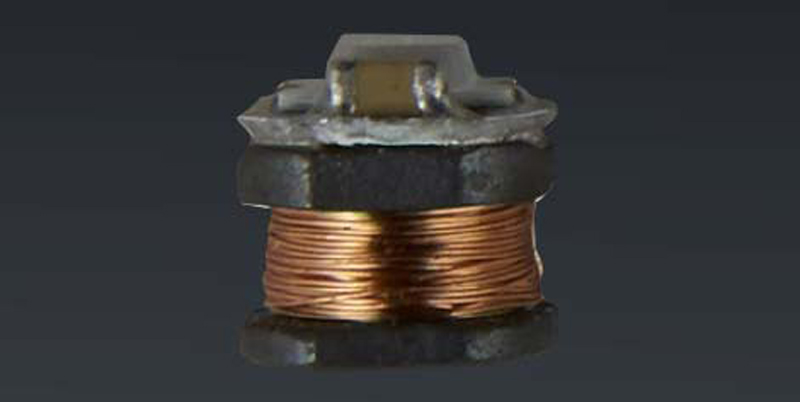Wireless LEDs. That’s what [Scotty Allen] found in Japan, and if you find something you just have to replicate it.
[Scotty] found these wireless LEDs in a display stand for model makers and gunpla. Because you don’t want to run wires, drill holes, and deal with fiber optics when illuminating plastic models, model companies have come up with wireless LEDs. Just glue them on, and they’ll blink. It requires a base station, but these are wireless LEDs.
After buying a few of these LEDs and sourcing a base station, [Scotty] found the LEDs were three components carefully soldered together: an inductor, two caps, and the LED itself. The base station is simply two coils and are effectively a wireless phone charger. Oh, some experimentation revealed that if you put one of these wireless LEDs on a wireless phone charger it’ll light up.
The next step is of course replication, so [Scotty] headed out to Akihabara and grabbed some wire, resistors, and LEDs. The wire was wrapped into a coil, a LED soldered on, and everything worked. This is by no means the first DIY wireless LED, as with so many technologies this too hit fashion first and you could buy press-on nails with embedded wireless LEDs for years now. Check out the video below.
















Old news, those were a thing like 20 years ago
https://www.youtube.com/watch?v=RWCBKhLajhA
“… three components carefully soldered together: an inductor, two caps, and the LED itself.” :-D
three components
If you expect technically correct summaries, you’re definitely on the wrong site.
B^)
There are 10 kinds of people. Those who use binary, and those won don’t.
As we say in software development: there are two kinds of error – conceptual errors, implementation errors, and off-by-one errors.
Inductor, capacitor, led ranges…?
Those old mobile phone sticker LEDs were also WIRELESS SUB-GHz LEDs which pickup mobile phone TX radio energy with some sort of resonance pick-up.
I always guessed as much, those were great, should see if I can track some down again
I found this DIY kit on AliExpress.
It may only work on 2G network, which is rare now.
I don’t know how it work or will it work or can it be modified for 3G/4G.
US $0.99 8%OFF | Mobile Phone Signal Flash LED Light Kit Radiation Power Supply DIY Kit GSM Mobile ICSK032A
https://s.click.aliexpress.com/e/bnLxWJzI
@hackaday this report button still looks too much like something to reply^^
this google image search brought me some nice results like these led fingernails
https://www.google.com/search?q=led+sticker+smartphone&newwindow=1&source=&tbm=isch
Love. It.
OK, “gunpla” is a word which was happily missing from my vocabulary until moments ago.
I’ve just googled it myself. I’m not really sure why it needs its own word, but it seems harmless enough. I’ve put together some plastic model kits during my time.
This is a typical Gunpla section in a big hobby store. This is why this category has it’s own word. Also, Japanese LOVE portmanteaus
https://pbs.twimg.com/media/DXu3Lw2UQAA3PsI.jpg
Something about the Japanese language really seems to encourage compound words *cough the entire writing system cough* so they have naturally gravitated towards efficiency in writing.
It’s so fundamental there’s an entire english wikipedia article about it.
https://en.wikipedia.org/wiki/Yojijukugo
For the rest of us OFs…
Gundam models, as well as the hobby of assembling and painting them, is known in Japan as Gunpla (ガンプラ Ganpura), a portmanteau of “Gundam plastic model”, plastic being the most common material for the retail kits.
-Wikipedia
And included in the long list of things that I’ve learned from Hackaday over the years.
Apparently, X-base was a Kickstarter at the end of 2017.
https://www.kickstarter.com/projects/1294229783/x-base-wireless-led-lighting-and-display-system
I haven’t slept for 6-days, and these little lights are just SO INTERESTING!!!!
There are other similar flat ones sold as led fingernails, hyped as powered by your phone’s NFC I got off AliX a few years ago. Thin coil made of flex PCB, an led, and a capacitor
I did yesterday, only coil and LEDs ..https://youtu.be/ifTaDor_iNo
So how would one go about making these charge while in the field so they can work for say 10 seconds after leaving the field?
I think you could make the LC circuit store much more energy, but then it starts to get physically big. Could you rectify the current and store it in a separate, large capacitor that feeds the LED?
Interesting idea to use a larger cap as a temporary battery. Did it ever materialize?